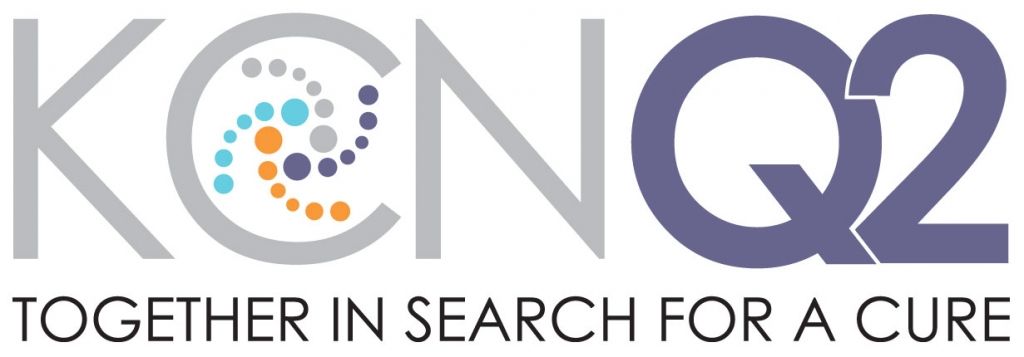WHAT IS KCNQ2?
KCNQ2 is a gene involved in the proper functioning of a potassium channel in the brain. Abnormal changes, or mutations, in the gene are associated with seizures. KCNQ2-related epilepsies represent a spectrum of conditions from mild to severe. In 1998, mutations in KCNQ2 were associated with a mild condition called “Benign Familial Neonatal Epilepsy” or BFNE. Babies with BFNE have seizures that begin shortly after birth and then stop within several months. Development is usually normal. BFNE may run in families, as the name implies.
Researchers recently identified different mutations in KCNQ2 that are associated with a severe form of neonatal epilepsy. This severe, non-inherited (de novo) form has been called several names: KCNQ2 encephalopathy, KCNQ2-related neonatal epileptic encephalopathy, KCNQ2-deficiency syndrome, and KCNQ2-related epilepsy. As more patients are diagnosed with this emerging condition, doctors are finding that this mutation contributes to a spectrum of clinical outcomes that includes developmental problems ranging from moderate to severe.
How is KCNQ2-related epilepsy diagnosed?
Diagnosis depends on careful review of the clinical history, examination of the patient by a pediatric neurologist, and an electroencephalogram (EEG or brain-wave test). In all cases of KCNQ2-related epilepsy, seizures begin shortly after birth and the EEG is initially abnormal. The constellation of symptoms is often consistent with “Ohtahara syndrome” which is a severe neonatal epilepsy with many different potential causes. When babies begin to exhibit symptoms of Ohtahara syndrome, their doctor will send tests to determine the underlying cause. This may involve MRI of the brain and examining samples of blood, urine, and cerebrospinal fluid. Comprehensive genetic testing that also looks for KCNQ2 mutations may be done.
What is the treatment?
Once babies are diagnosed with seizures, they may be given standard medications to prevent seizures. Although there is no specific treatment, seizures may respond well to sodium channel blockers according to reports in the medical literature. Hopefully, specific treatments that lead to a better outcome will be discovered in the future. Right now, there are new seizure medications being studied that specifically target the KCNQ2 potassium channels, but the effectiveness and safety of these drugs must be proven in rigorous clinical trials before we know if these are better than standard treatments. Research plans are underway for clinical trials to find the best and safest treatments for KCNQ2-related epilepsy. In the meantime, seizure control and intensive therapy are essential to achieve the best developmental outcome possible.
What is the prognosis?
Of patients reported in the medical literature, prognosis appears to be variable. Seizures may eventually come under control with medication. Most, but not all, children will have fewer or no seizures after approximately age 3 years, but developmental delays may become more evident as the child grows older. In the majority of KCNQ2-related epilepsy cases reported in the medical literature, the child is slow to speak and is dependent on caregivers. Early diagnosis by genetic testing may avoid unnecessary evaluations for other causes.
Visit KCNQ2.org for more information.
We at The Jack Pribaz Foundation have created a new website with many more resources for parents, medical professionals, and people who want to support the cause. Please visit

